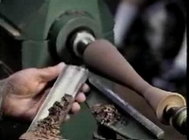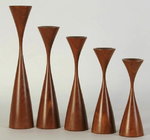Hi everyone. Does anyone here use a continental gouge much? I watched a video recently of Ulf Jansson turning a face grain bowl (note, NOT endgrain) with a ring tool and a continental gouge. While I’m ready to give up my bowl gouge for a ring tool, he did make a concvinving argument for a continental gouge being a superior finishing gouge. Essentially, the shallow curve allows for shavings to be sliced over a relatively long distance.
I’ve never used a continental gouge, and have limited knowledge of it (aside from randomly popping up in spindle videos). Has me thinking though. Thoughts?
I’ve never used a continental gouge, and have limited knowledge of it (aside from randomly popping up in spindle videos). Has me thinking though. Thoughts?
Last edited:




